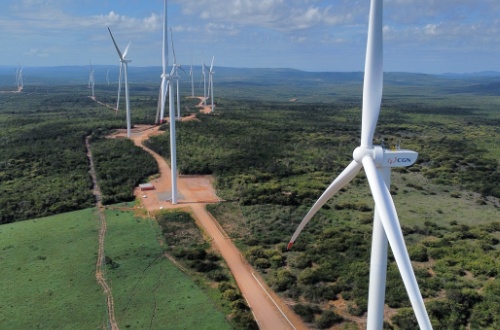06-23
Mekong is not a Political Tool for the U.S.
 2021-08-25
2021-08-25
Since 2009, the United States has paid increasing attention to the Mekong region. On September 11, the United States and Cambodia, Laos, Myanmar, Thailand, Vietnam and the ASEAN Secretariat launched the "Mekong-U.S. Partnership." This move reflects the importance of the Mekong region for the current US global strategic deployment and expands the original cooperation of the "Lower Mekong Initiative" signed between the U.S. and the listed countries as early as 2009. In the 2020 speech of former US Secretary of State, Pompeo, he emphasized that the United States will continue to cooperate with the lower Mekong countries on the basis of the US$3.5 billion investment in the past 11 years.
However, while strengthening cooperation with countries on the lower Mekong River, the United States has been criticizing China on the upper Mekong River for the development and protection of the Mekong River. It is hoped that in this way the cooperative relationship between China and the lower Mekong countries will be destroyed and China’s national image in the region will be affected with the interference of the United States.
A senior US diplomat stated that China's development and utilization of the Mekong and its leading cooperation projects aimed at manipulating the Mekong pose a direct challenge to ASEAN. The US Assistant Secretary of State for East Asia and Pacific Affairs even accused China of manipulating the flow of the Mekong for its own benefit, which would cost downstream countries a huge price.
In a report entitled "Water Flow Monitoring of the Upper Mekong River Under Natural Conditions (No Dams)" issued by the Eye of the Earth by the US Water Resources Research and Consulting Center, China was accused of restricting the Lancang River during the 2019 drought. The release of water caused the low water level of the Mekong River in Thailand, Laos, Cambodia and Vietnam to set historical records and resulted in droughts in these countries. According to this report, some American scholars further claimed that China did not experience a drought in 2019, and the low water level in the middle and lower reaches of the Mekong was entirely caused by Chinese hydropower companies using upstream dams to restrict the flow of the river.
Brian Eller from the Stimson Center in the United States stated that according to the data provided by the center’s virtual water level monitoring station, the design and operation of China's 11 mainstream dams have been carefully arranged and operated to maximize hydraulic power. The power generated by these dams is sold to the eastern provinces of China without considering the impact that can be caused on downstream at all. Other organizations, such as the Natural Resources Defense Fund and Greenpeace, also have published reports or statements criticizing China’s actions in the upper Mekong River for destroying the ecosystem and biodiversity of the countries around middle and lower Mekong River, which will bring more environmental damage to the lower Mekong countries profound and long-lasting influence.
The purpose of the so-called academic reports and research results released by the United States through think tanks and institutions under its control is to interfere with China's rational use of the Mekong which is based on the cohesive and friendly cooperative relations with the countries around the middle and lower reaches of the Mekong. In an interview with Russian Satellite News Agency and Radio Station reporters, Nadezhda Bektemirova, an expert from the School of Asian and African Studies of the Moscow State Lomonosov University, pointed out that reports and articles issued by the United States on China’s development and utilization of the upper Mekong have a very clear political inclination, rather than simple academic research. She further explained that there are a considerable number of political factors in the specific report that criticize the causal role of China in 2019’s drought because the sharp competition between the United States and China are quite fierce in all fields. Americans often try to describe China as a country that does not pay due attention to ecological identification, especially when developing joint projects with neighboring countries. This also exists in the conclusion section of the report. The United States intends to accuse China of only pursuing its own interests. It turns out that the political intention of the United Sates in weakening the image of China in the middle and low Mekong reaches is so clear that it cannot be covered by the academic shield.
Signing an initiative with countries on the lower Mekong River to further develop cooperative relations or criticizing China's unreasonable use of water resources in the Mekong River that threat the downstream countries through so-called academic reports and articles clearly show the consistent political power of the United States. They are also the means of the U.S. to conduct Interference in regional peace and stability and the purpose of obtaining self-interest from the Mekong River basin. In fact, environmental issues do need to be effectively promoted through international cooperation. However, such international cooperation should be based on mutual respect and trust, rather than blindly and unfounded accusations of other countries’ actions. At the same time, environmental protection must not be used as a political weapon to attack other countries and realize one's own interests.
Disclaimer: This article is reproduced from other media. The purpose of reprinting is to convey more information. It does not mean that this website agrees with its views and is responsible for its authenticity, and does not bear any legal responsibility. All resources on this site are collected on the Internet. The purpose of sharing is for everyone's learning and reference only. If there is copyright or intellectual property infringement, please leave us a message.




